A repository of artistic tributes to Rosetta, Philae & Comet 67P/Churyumov-Gerasimenko created by artists across the world: Music, Paintings, Sculptures, Poems, Installations, Performances, and more. Maintained by ESA on an unofficial, best-effort basis.
Don't wanna be here? Send us removal request.
Link
Randall P. Munroe made a real-time Rosetta/Philae tribute cartoon -- actually a very long series of cartoons, updated every five minutes. I just happened to find this Rosetta art tribute site while searching for information about the landing, after seeing the retrospective animation on Explain XKCD.
3 notes
·
View notes
Video
youtube
The Rural Alberta Advantage: Brother
The song Brother by The Rural Alberta Advantage took inspiration from above – the amazing adventures of Rosetta and Philae, two satellites & the idea of waiting for someone.
Source: @ruralalberta
The Rural Alberta Advantage is a Canadian indie rock band that formed in 2005 in Toronto. The band consists of Nils Edenloff on lead vocals and guitar, Amy Cole (Robin Hatch between September 2016 and January 2018) on keyboards, bass, and backing vocals, and Paul Banwatt on drums. They have released four albums and are signed to Paper Bag Records in Canada and Saddle Creek Records internationally. In 2011 they were nominated for a Polaris Music Prize.
Source: Wikipedia
1 note
·
View note
Photo
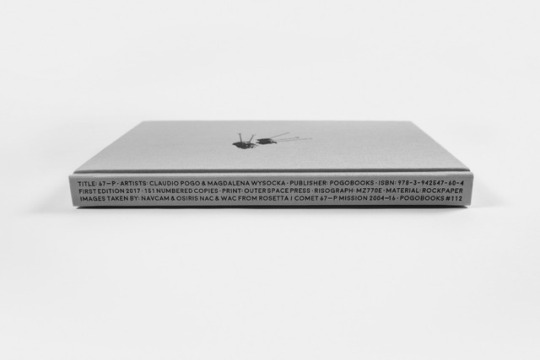
Claudio Pogo & Magdalena Wysocka: 67–P
A photobook published by PogoBooks Berlin. September, 2017
Edition: 151 numbered copies Format: 17 x 24 cm Pages: 192 Images: 143 Print: Risograph Clothbound Hardcover ISBN: 978-3-942547-60-4
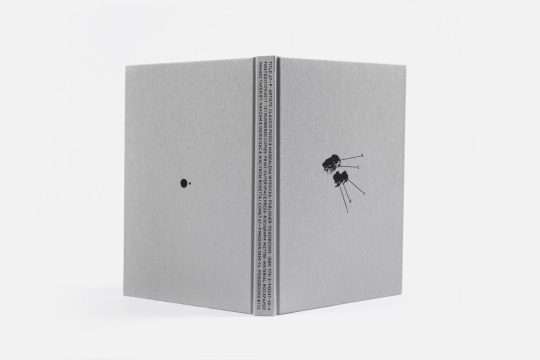
A visual journey through a true deep space odyssey. 67–P is an abstract and subjective vision on the European Space Agency’s photographic archive of the world famous Rosetta mission.
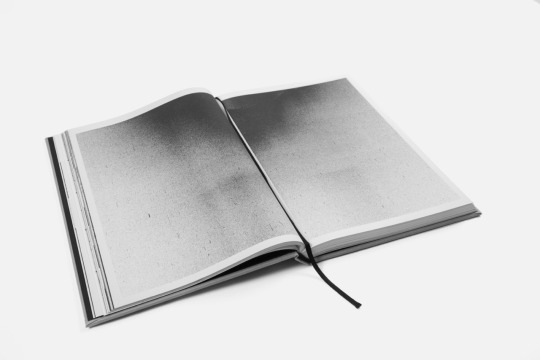
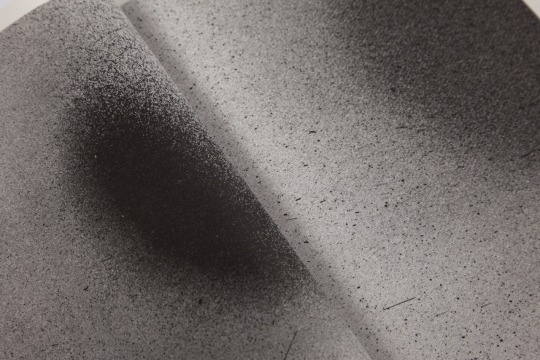
In 2017 artist duo Claudio Pogo and Magdalena Wysocka discovered the ESA image archive and created the artist book 67-P. The artists mission was the transformation of photography from science to art.
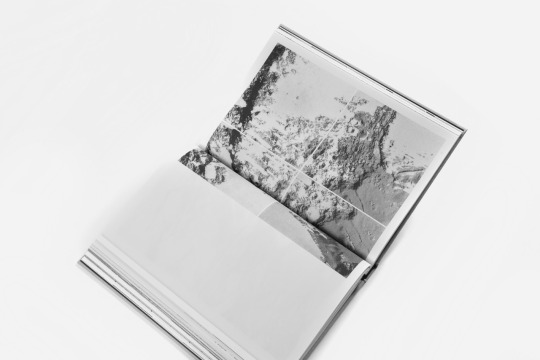
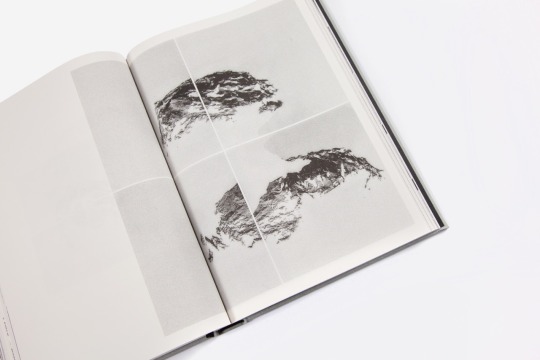

The book was printed with a Risograph on a paper made entirely out of chalkstone. The combination of these two techniques is also a first in history, and besides from saving planet earth, it gives the book an extraordinary haptic experience of holding an object that seems to have its own gravity.

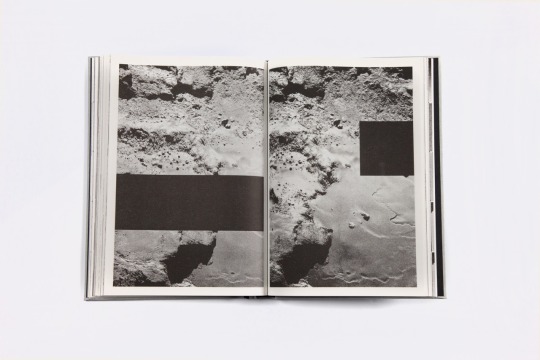
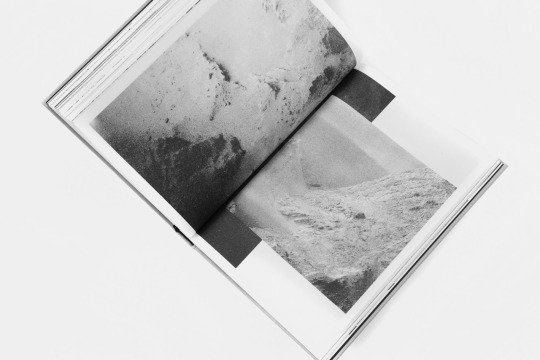
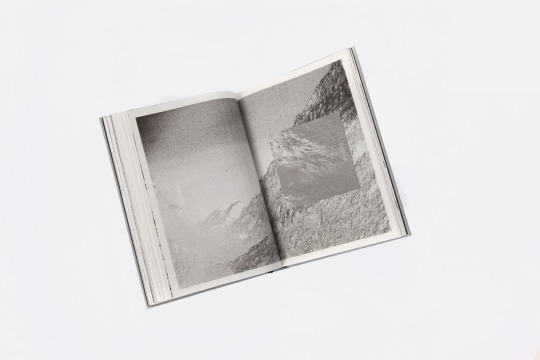
The handcrafted book was produced by German bookmaking studio OUTER SPACE PRESS in an edition of 151 numbered copies.
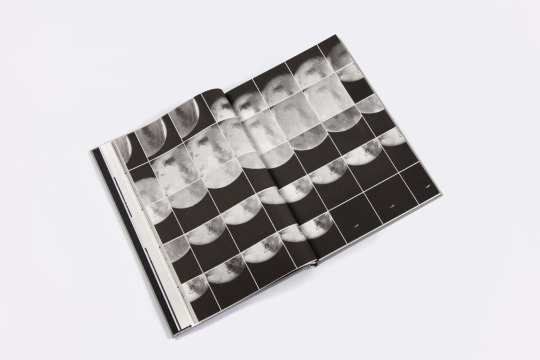
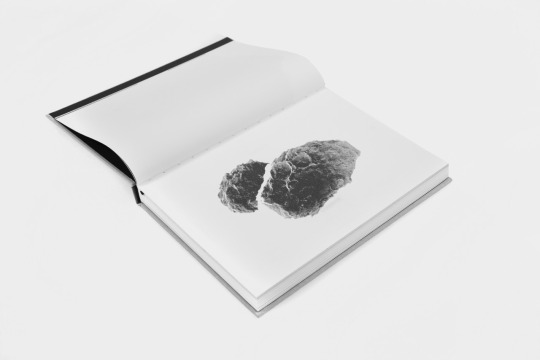
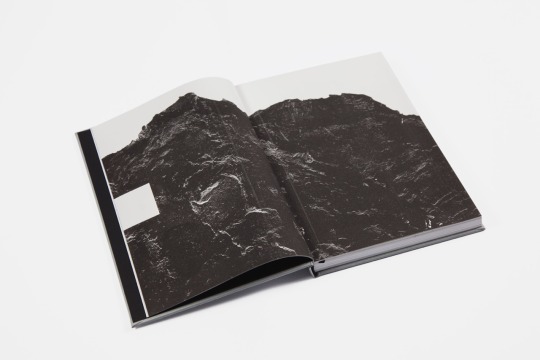
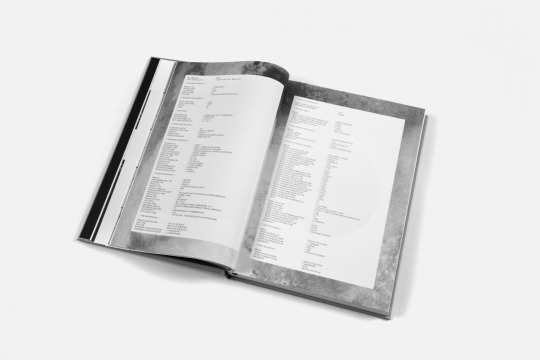
Outer Space Press is an artist-run book design and print studio found by printmaker Magdalena Wysocka and publisher Claudio Pfeifer, based in Berlin, Germany. Predominantly focused on Risography, they mix various printing techniques to produce unique artist publications, multiples and editions.
More: http://outerspacepress.com/
#book#art book#print#risography#photography#black and white#bw#rosetta#osiris#navcam#comet 67p#philae#bookmaking#limitededition#rosettaarttribute#publishing#printmaking#germany#curated printing
3 notes
·
View notes
Video
youtube
Casey Emme: To Catch A Comet: The tale of Rosetta and the Space Duck
A Science Fable series book Published by Mannshed Productions, 2017 http://www.caseyemme.com/portfolio-posts/to-catch-a-comet/
The children’s book To catch a Comet is an illustrated journey inspired by the real adventures of the Rosetta spaceship and the duck-shaped comet she found. Along the way she meets a clumsy stork, the friendly moon, a grumpy Mars, dangerous asteroids and the giant Jupiter.
“Where are you going, little spaceship? I am off far above the clouds to catch a comet that streaks across the skies. Do you want to come too?"
Read along with the author:
youtube
Casey Emme is a designer and artist amongst other things. He was born near the shores of Lake Victoria in Uganda. After moving around quite a bit in Africa and Europe, he has now settled to feeding sparrows and hedgehogs in the New Forest in England — except when he gets the chance to go on an adventure of his own.
More on the author’s website: http://www.caseyemme.com/
#book#children's book#illustration#illustrated book#design#rosetta#comet#comet 67p#space duck#tale#rosettaarttribute#england
1 note
·
View note
Photo
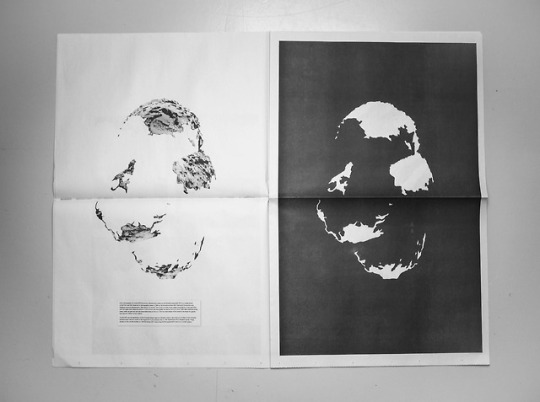
Vera Gomes: Terra Nullius
"Terra Nullius" 🌑🕳 is a broadsheet newspaper fanzine, published in 2017, Bergen, exploring the many facets of the roman concept after which it is entitled. From rock - to mountains - to celestial bodies - to cyberspace - and back to rocks, when the Rosetta satellite crashes into Comet 67P.
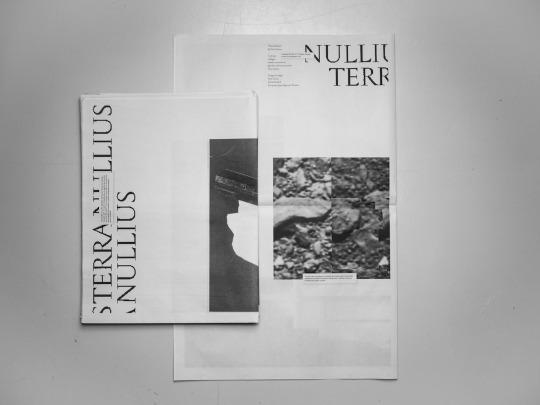
Through the irony of printed glitchy imagery, this zine is also an exploration of what is the intersections between the "real" and the "virtual". And the deterioration of the real into the virtual. . . It was printed by the amazing people at @newspaperclub

With experience as a self-employed and agency professional, Vera is a self-driven graphic designer and visual artist based in Bergen, Norway. Her practice focuses on concept development/implementation within brand identity and visual communication, across print and digital environments. She has a design education from Norway and Portugal, and is equipped with a high aesthetic sense, constructive thinking and organised methodologies. Having art directed a contemporary music festival in the past, she currently works at ANTI Bergen, makes her own fanzines and has been exploring graphic arts through independent publishing.
More about Vera’s work: @veraftgomes
#fanzine#zine#newspaper#print#images#real#virtual#rosetta#comet 67p#graphic design#visual art#rosettaarttribute#portugal#norway#scanart#glitch#newspaper print#black and white#bw
2 notes
·
View notes
Photo
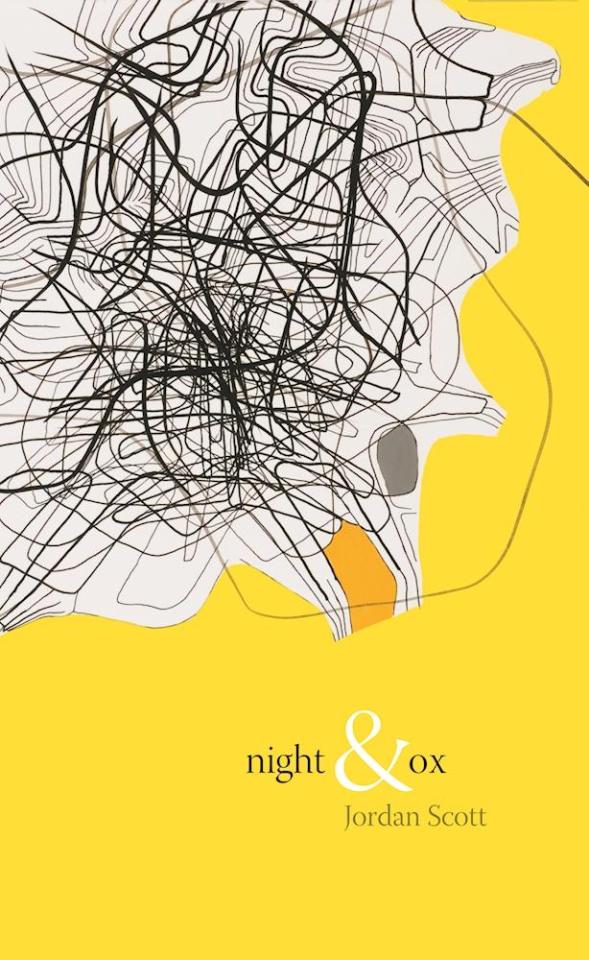
Jordan Scott: Night & Ox
bronchia think form a bombsight think periosteum singing particle falconry workpiece two lowcut hills seeking what stone is for body is herd alliterations
Night & Ox is a long poem working its interruptions to a degree where it's broken by the will to live. A poem that invokes expansive loneliness, where the poet's emotional response is to endure. A crushed line of astral forms and anatomy in perpetual remove; it is a poem that nurtures vulnerability: some soft-footed embryo sounds against language’s viscera. Night & Ox possesses a feral minimalism for those too tired and too frantic with joy to cope with narrative.
Night & Ox is published by Coach House Books: https://chbooks.com/Books/N/Night-Ox
From the afterword:
“Night & Ox were written during the winter of 2013 and the summer of 2016. During this time, the European Space Agency’s Rosetta spacecraft caught up with Comet 67P/Churyumov-Gerasimenko and dropped the Philae lander onto its surface. The lander bounced across the comet’s terrain and settled somewhere on its duck-shaped head, where it finally received enough sunlight to emerge from hibernation and contact the Rosetta spacecraft. I first saw the images taken by Rosetta’s navigation camera when the comet reached perihelion, its closest approach to the sun. The first images I saw were of a comet deep in shadow surrounded by crisscrossing sunlit jets of gas and dust; a comet’s silhouetted underbelly surrounded by faint traces of debris; grainy images of a two-lobed comet uneven in gravity and surrounded by a matrix of stars, particles and a halo of camera noise.
Within the intervals of these transmissions between Rosetta and Philae, I was learning to be a father. The same sunlight that woke Philae covered the backyard and kitchen and my two sons at play in our home on Trinity Street, Vancouver, where I wrote most of Night & Ox. These images taken by Rosetta became the mood lighting of a poem that constantly defied containment. When I started the poem, I was just beginning to learn about my boys. I was, as Tom Raworth writes, ‘alive and in love’ and both completely adrift in this intimacy and completely contained by the rituals of parenting: the bedtime, the snacktime, the naptime, the shit. I wrote Night & Ox within these rituals, typing the first lines of the poem with one hand, holding my son Sacha as he slept. With his form attached to mine, the lines took on a shallow and hurried breathing, one of restlessness and the infinitesimal movements of a body bound tightly to a larger form.”
Jordan Scott is the author of Silt (2005), and from Coach House Books: blert (2008), Decomp (2013, a collaboration with Stephen Collis and the ecosphere of British Columbia), and Night & Ox (2016). His chapbooks include Clearance Process (SMALL CAPS, 2016) and Lanterns at Guantánamo (Simon Fraser University). Jordan is also the author of the chapbook Dawn published by Tinfish Press of Hawaii (2017). He has been featured at international literary festivals such as Days of Poetry and Wine in Slovenia, and the Oslo International Poetry Festival in Norway. His work has been translated into Slovenian, French, and Portuguese. Scott was the 2015/16 Writer-in-Residence at Simon Fraser University and works with Broc Rossell at The Elephants.
#poetry#poem#book#literature#english#english poetry#rosetta#landing#philae#comet 67p#cometlanding#rosettaarttribute#canada
1 note
·
View note
Photo
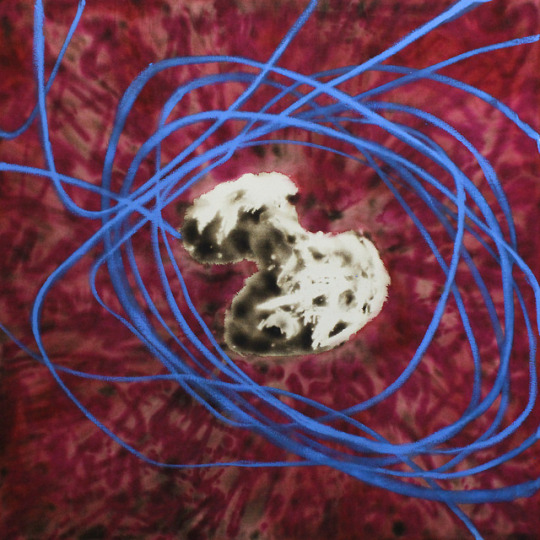
Michael Serafino: Closing Orbit
Ink and Pigment Stick on Burned Canvas.
Michael Serafino (@Mikafino) is an artist from Brooklyn, USA. As a painter, the continuous search for a subject allows him to engage his myriad passions, from physics and space exploration to music and fashion. While some artists seek fame or fortune, his ultimate goal is to make enough art worth a ticket to space.
More at: www.mikafino.com
#art#fine art#painting#canvas#burned#ink#pigment#rosetta#comet#comet 67p#space#orbits#rosettaarttribute#usa#ny#submission
1 note
·
View note
Video
youtube
Chiara Berardelli: Deep Space Hibernation
Official video for the single ‘Deep Space Hibernation’ Lead single in the studio album ‘Seamonster’ released on 2 March 2018
Chiara wrote about the song: "Inspired by the two year 'deep space hibernation' of the Rosetta probe during its mission to land on a comet. At the time, getting away from the world for two years sounded just what I needed…"
Chiara Berardelli; vocal, piano Jackie Baxter; cello Jonathan Lilley; bass Ross McCrae; trombone Rich Merchant; cornet Biff Smith; additional vocals Ian Stoddart; drums Paul Tasker; guitar
For an earlier, acoustic version of this song, see here.
Chiara Berardelli is an Italian Scottish singer-songwriter living in Glasgow, Scotland. She grew up playing classical piano but spent most of her time playing along to any songs that made it over the airwaves to the Highlands of Scotland. Chiara left her job as a doctor to follow her passion and studied music and songwriting in London and Bath. A lover of words, chords and honesty she writes confessional pop songs about life and how it affects her.
More about Chiara: https://chiaraberardelli.com/
#music#folk#rock#pop#indie#acoustic#piano#singer-songwriter#album#rosetta#space#hibernation#rosettaarttribute#glasgow#scotland#uk#cometlanding#song
0 notes
Photo
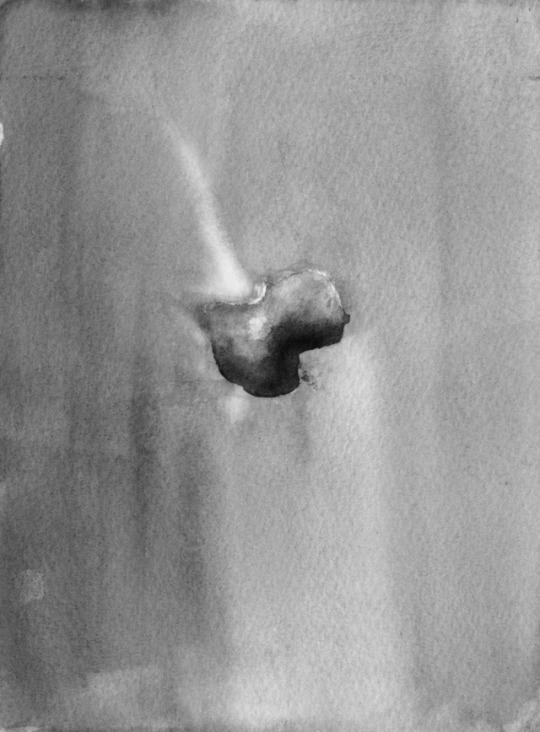
Patricia McCormack: Cliff Falls From Comets in Zero Gravity
Series of paintings – ongoing project.
Patricia wrote: “A small amount of gravity exists on comet 67P, just enough to allow pieces of it to fall away. I like to consider that these pieces don’t fall in any particular direction - up, down, right or left.”
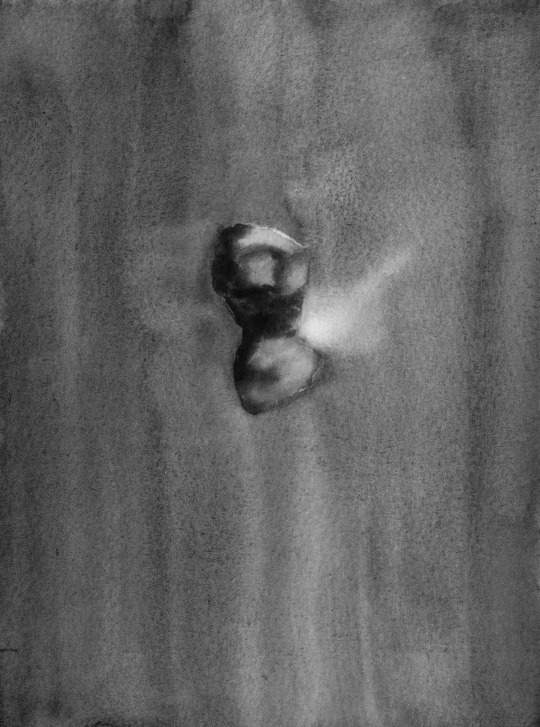
“The position and shape of the comet changed frequently during our observations of it, particularly in 2015. During a close encounter with the sun several cliff falls occurred sending outbursts of dust and ice out into empty space.”
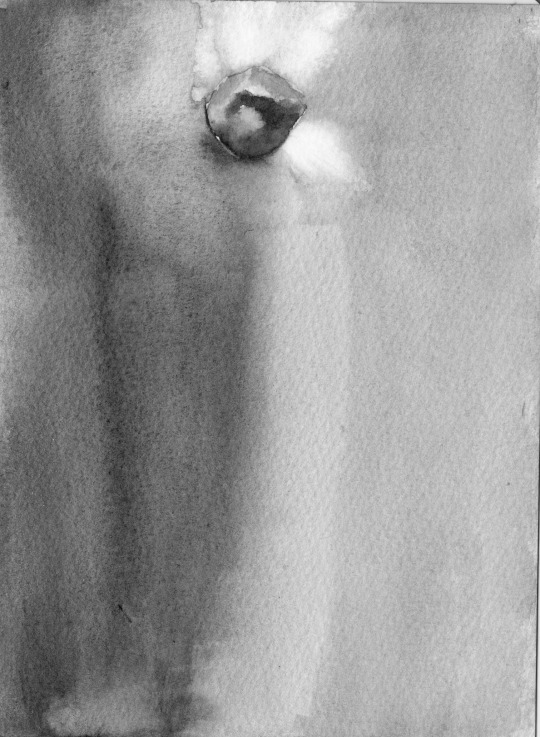
“These paintings are not so much about comet 67P, but about the movement occurring upon it and how these movements of rock changed the space around it. Cliff Falls from Comets in Zero Gravity exists in an early stage but currently these small paintings speak the in strongest voice so far. This project is ongoing.”
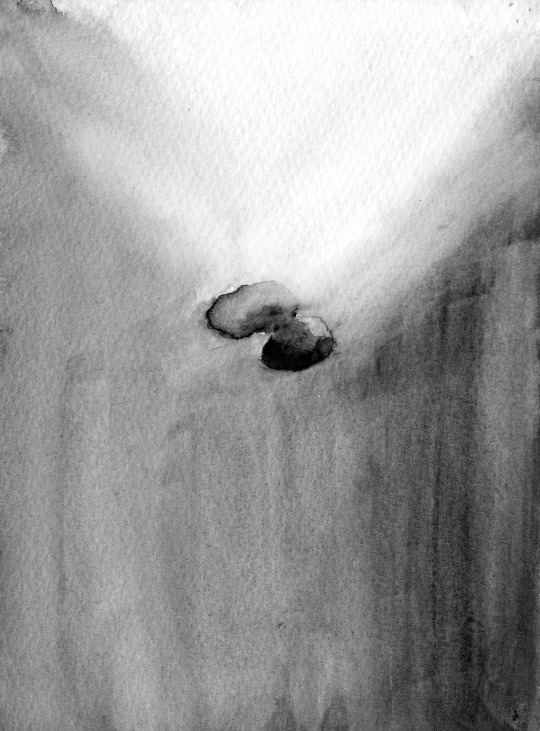
Patricia McCormack is a fine art and event photographer currently based in Edinburgh, Scotland (UK). In 2011 she graduated from the Dún Laoghaire Institute of Art, Design and Technology in Dublin, Ireland, with a First Class Honours Degree in visual art practice. In 2012 she also completed a Diploma in photography and digital imaging at the National College of Art and Design, Dublin. She has just completed a Masters in contemporary art practice at the University of Edinburgh and the Edinburgh College of Art, Scotland.
Since moving to Edinburgh she has focused on the influence of our atmosphere in the production of landscape and astrophotography. Since 2014 she has been working in collaboration with astronomers and astrophysicists at the Royal Observatory, Edinburgh. Through this collaboration her practice had dived into a domestication of the astronomical sublime where nebulae become 'connected' to light switches, galaxies become unreadable maps, interstellar dust clouds become 'removable' and a park bench becomes a viewing platform for the approach of our nearest galaxy - Andromeda.
More at: http://patriciatallulagh.wixsite.com/pisforphotography and: http://trishmccormackthrowingrocks.tumblr.com
#art#fineart#painting#black and white#comet#comet 67p#cliff#rosetta#rosettaarttribute#movement#space#orientation#astronomy#astronomical images#landscape#outburst#work in progress#ireland#scotland#uk
12 notes
·
View notes
Audio
Yun Wei: Unpublished Diaries of The Philae
Comet Lander, November 2014
four billion miles later I thirst for a pinch a hurt a cough pin drop on floorboards anything to break this flameless lickless nothing streak across
dust water ice will do nicely for a ten-year crave brought nothing but tampons and passports for a comet chase a tensile density they told me in crystal-cut multiplications
I should have stayed where up down were severed siblings where silence lived within its means but no one would let me laugh the way I do here tongue out loose bones flattened to match the dark-glazed scenery
how the cartilage of things glow here boundaries can be traced filled with all the geometry I can remember except for the shape of arrows and exit yes dust water ice feels good between the toes
This poem first appeared in Maudlin House in 2015: https://maudlinhouse.net/four-poems-by-yun-wei/
Republished here with permission of the author.
“Unpublished Diaries of the Philae” is featured in the Brooklyn Poets Anthology, published in 2017: http://brooklynpoets.org/community/poets-anthology/
About the making of the poem, Yun said in an interview:
“When I read about the Philae lander that traveled for almost eleven years and four billion miles to land on comet 67P with no return ticket, I found myself heartbroken for a robot. I started imagining the undiluted loneliness of the journey, the excitement and nobility of the sacrifice, what the scientists would have told me before launch. I wondered what I’d bring with me besides tampons. And finally the landing: one chance to arrive at a piece of rock/ice I’d never leave. Would it feel like home?”
Full interview at Brooklyn Poets: http://brooklynpoets.org/poet/yun-wei/
Yun Wei received her MFA in poetry from Brooklyn College (NYC, USA) and a bachelor’s in international relations from Georgetown University (Washington DC, USA).
Her writing awards include the Geneva Literary Prize in both fiction and poetry and the Himan Brown Poetry Fellowship. Her writing has appeared in decomP Magazine, Roanoke Review, apt, Word Riot, the Brooklyn Review and other journals. For the last few years, she worked on global health in Switzerland, where she consistently failed at mountain sports. Currently in Brooklyn, she is working on her first novel.
More about Yun Wei on her website: http://thepomegranateway.blogspot.nl/
#poem#poetry#rosetta#comet#philae#lander#cometlanding#space#exploration#journey#science#verse#english#brooklyn#nyc#usa#rosettaarttribute#audio#literature#lit mag#literature magazine#anthology
1 note
·
View note
Photo

Gerard Torres Sanmartí: Rosetta
Mixed media on framing chrome canvas. 53x53 cm 2013
This work is part of a series of paintings called Explorations, which is inspired by the unknown nature of space exploration, this adventure that also has its similarities with artistic exploration, both conceptually and technically.
Gerard wrote: “When I learned that there was a space mission with the name Rosetta, I wanted to incorporate it into the project. I was surprised that the name of the mission had the same name as the stone of Rosette, this stone from the time of the Egyptians that contained so much information. All of this inspired me to make the Rosetta satellite with the maximum amount of color chromatic possible as a reference of the knowledge that hosted the mission or was to discover, as was the new feat that ended up doing.”
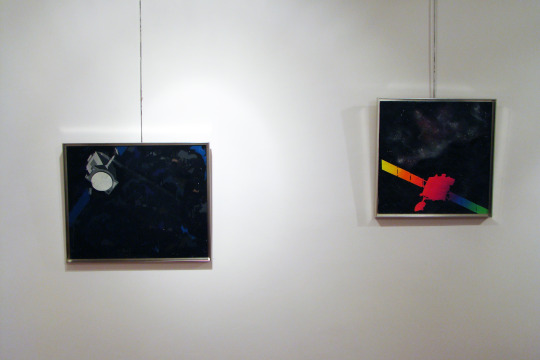
Left: Galileo (Spray on framing tablex; 53x64 cm); right: Rosetta (Mixed media on framing chrome canvas; 53x53 cm).

From left to right: Voyager I (Spray on canvas; 65x81,50 cm); Cassini (Spray on canvas; 65,50x81 cm); Galileo (Spray on framing tablex; 53x64 cm); right: Rosetta (Mixed media on framing chrome canvas; 53x53 cm).
About the Explorations series, Gerard wrote:
“The universe is an immense and unknown place in which human beings still remain. He does not know most of the observable and what may happen. It happens then an ideal place to get carried away by the imagination and be able to do it visible the invisible. Nowadays, we use artificial satellites to power see what hides this outer world, trying to decipher what we are surrounds and creating hypotheses that give explanation to the incognito. This is the premise that I surround myself to develop the set of works that make up the collection titled Explorations.
A work of imagination of phenomena and concepts that can go to the universe together with artificial satellites as drivers of the series of works. The present corpus has been developed throughout the year 2012-2013 where the multitude of techniques and formats make up a singular work. Explorations not only entails a perquisition at the plastic and conceptual level but it also does so with an inquiry into the plastic techniques applied to the work of art. We can find works on canvas, canvas, with paint to oil, plastic paint, markers or spray. I work with them Impressions that each technique and material contribute in the representation conceptual of the expressed.
The expository idea that I put forward is to show the works breaking classical visual horizontality because the universe, as the author says, can not be understood as a place with a pre-established horizon, it is a space that the observer is completely surrounded.”
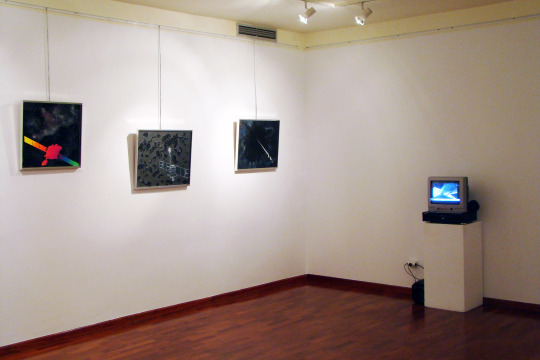
From left to right, hanging on the wall: Rosetta (Mixed media on framing chrome canvas; 53x53 cm); Mars Global Surveyor (Mixed media on framing tablex; 53x64 cm); Shenzou (Spray on framing tablex; 53x64 cm).
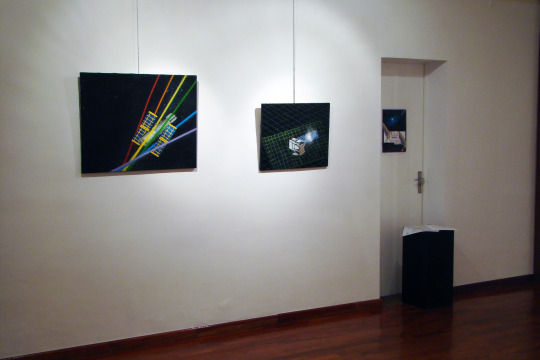
From left to right: Hubble (Spray on canvas; 65x81 cm); Suomi (Mixed media on canvas; 50x61 cm); a poster of the exhibition.
This series of painting was first presented as a solo exhibition, Explorations, in October–November 2013 at Acadèmia de Belles Arts Fundació Privada in Sabadell, Barcelona. A later exhibition, called Explorations II, took place in March–April 2015 at the technology and innovation park ESADE-Creapolis in Sant Cugat del Vallès, Barcelona.
Photographs courtesy of the artist.
Gerard Torres Sanmartí is an artist based in Sabadell (Barcelona, Spain). He holds a degree in Fine Arts (2013) and a Master's in Artistic Production and Research (2016) from the Faculty of Fine Arts of the University of Barcelona. During his master's degree, he attended the workshop "Bruxism" with artist Fernando Prats and did an internship at the Tecla Sala Art Center, Barcelona.
In 2016 he obtained a residence at the Estruch Factory of Creation of the Live Arts in Sabadell, and later exhibited the works at the Sabadell Museum of Art. In 2017, he took part in the exhibition “Afectes; l'arxiu obviat del procès”, curated by Gorka Plans in the gallery Abbé-Pierre de Sabadell. In 2012, he won the 1st prize in the Fanzines category at the 9th Literary Prize of Sant Jordi at the Biblioteca de l'Ametlla del Vallès. He was a finalist at the Güell Foundation painting prize of the Royal Artistic Circle of Barcelona (2015), in the visual arts prize of the Arranz-Bravo Foundation (2016) and in the “SETBA Jove 2017″ of the SETBA Foundation of Barcelona (2017). He was also selected by the Jeunne Creation Europénne (JCE) to participate in the Biennale JCE exhibition in Montrouge, Paris (2017).
He currently manages and coordinates the Academy of Fine Arts in Sabadell (Barcelona, Spain) and hosts the “El Cub Blanc” (The White Cube) radio show dedicated to the dissemination of plastic arts at Radio Sabadell 94.6 fm. More info at: www.gerardtorres.com
#painting#art#fine art#canvas#mixed midea#polychromatic#rosetta#spacecraft#space exploration#space#universe#voyager#cassini#hubble#spain#rosetta stone#galileo#satellites#unknown#exhibition#rosettaarttribute#ancient egypt
3 notes
·
View notes
Photo
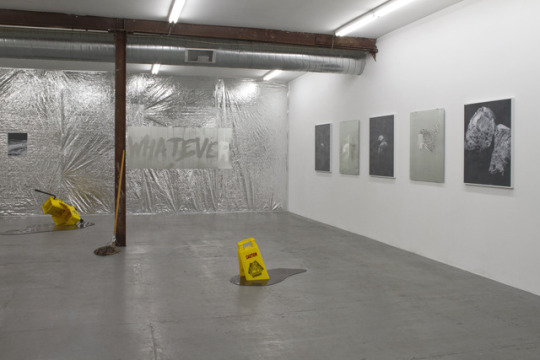
Jeffrey Michael Austin: Strange Mess
A solo-exhibition at The Luminary in St. Louis, Missouri (USA) – presented in partnership with ACRE.
September – November 2017
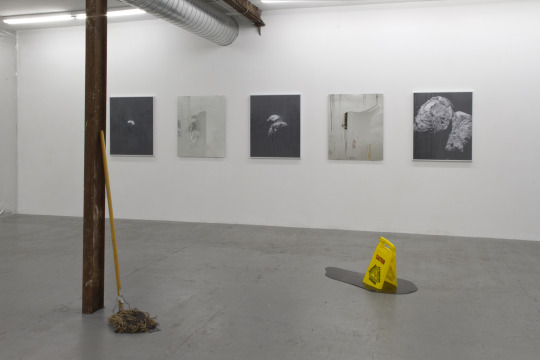
Jeffrey wrote: “I looked to the Rosetta mission as a stand-in example of an astounding and wondrous feat of mankind, so grand in its scale of accomplishment that it's difficult for most people to recognize as anything but an abstract story -- not easily reconcilable with day to day life on Earth.”
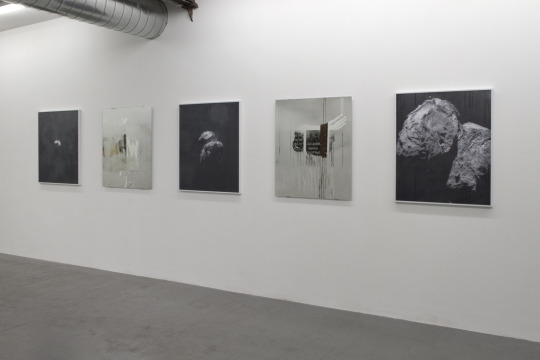
Above: 'Closing in (1-3)' and 'Stay alive (3&1)'; Resin on framed digital prints and resin on mirrors; Images taken from Rosetta spacecraft of Comet 67P/Churyumov-Gerasimenko, courtesy of NASA
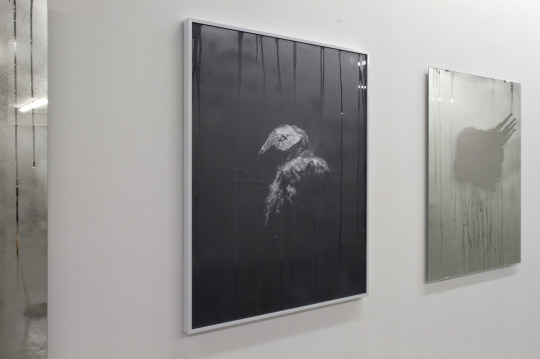
Above: 'Closing in (2)'; Resin on framed digital print; Image taken from Rosetta spacecraft of Comet 67P/Churyumov-Gerasimenko, courtesy of NASA; 31 ¾ x 38”
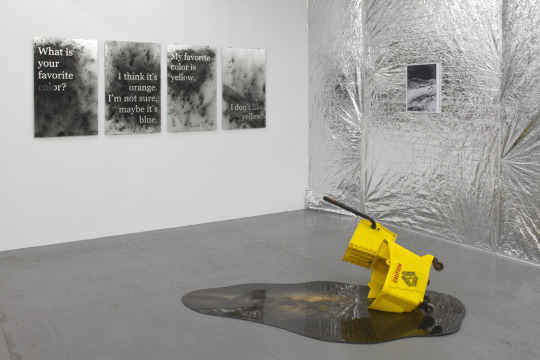
“In this exhibition, I wanted to juxtapose this end of the spectrum of human achievements -- and the immense scale of its context: the cosmos -- with its opposite: the mess of mundane, routine happenings we would rarely regard as extraordinary or worthy of enthusiasm. Navigating this Strange Mess, one's concerns are pulled through the tangible and the theoretical; the vain and the reticent; the odd and absurdly meaningful.”

Above: 'Stay afloat (caution, attention) 2'; Plastic, wood, polyester resin and digital print; 42 x 22 x 19”
All images courtesy of the artist – Copyright Jeffrey Michael Austin © 2017
More about this exhibition on the artist’s website: http://www.jeffreymichaelaustin.com/strange-mess
Jeffrey Michael Austin is an interdisciplinary artist, musician and educator based in Chicago (USA). Through a variety of sculptural and installation processes, Austin composes situations characterized by instability, impermanence and illusion -- inviting from their visitors an urgent sense of empathy, mindfulness and openness to the unknown.
His work has been exhibited nationally and internationally, recently including such venues as Société d'Électricité (Brussels), The Luminary (St. Louis), Chicago Artists Coalition, Hyde Park Art Center, Ed Paschke Art Center, Le Carreau de Cergy (Paris), Kunstenfestival Watou (Belgium), The University of North Texas Art Galleries, Lehr Zeitgenössische Kunst (Berlin), The Museum of Contemporary Art Chicago, Fondation Vasarely (Aix-en-Provence), The Mission, The Franklin, and Manifold, a partner of ACRE Artist Residency.
Austin studied at Columbia College Chicago and the Burren College of Art in Ireland before eventually receiving his BFA from The School of The Art Institute of Chicago. He is currently producing music as one third of Growing Concerns Poetry Collective.
More at: http://www.jeffreymichaelaustin.com
#contemporary art#installation#mixed media#rosetta#comet 67p#space#cosmos#everydaylife#sculpture#photography#rosettaarttribute#usa#chicago#st. louis#exhibition#achievements#extremes
0 notes
Photo

Daniela Balthaus: Where is Philae?
Above: Q 80/Philae, 2016, tempera on canvas 80 x 80 cm
The artist wrote: “Since 2014 media coverage on Rosetta and Philae began, I have been attracted by the project and follow the news. One of the most moving moments was the separation of the lander Philae from Rosetta.
After the first touchdown Philae disappeared. Where is Philae? At that time I had started painting the abstract series Q: tempera on canvas, size of 80 x 80 cm each.
One day, Philae appeared on one of the paintings.
Other paintings within the series Q evoke thoughts on stellar worlds and space views.
On the occasion of a presentation about the mission Rosetta the globular cluster Messier 107, in short M107, has been ‘identified’ by Prof. Berndt Feuerbacher, one of the scientific initiators of the lander Philae, on one of the paintings. M107 belongs to the constellation Ophiuchus.
I have shown my paintings in several exhibitions. Under the title ‘Where is Philae?’ I exhibit the ‘cosmic paintings’ with one exception: the painting ‘Philae’. It is not for sale.
More ‘Where is Philae?’ paintings are to be discovered on my website. Under the headline IN MIND you can read about the connection to the Rosetta Mission.”

Above: Q 61/M107, 2015, tempera on canvas, 80 x 80 cm

Above: Q 55, 2015, tempera on canvas, 80 x 80 cm
All images courtesy of the artist – Copyright Daniela Balthaus ©
After education and work as a lawyer, Daniela Balthaus began to do what she really wants to do: painting. She studied at the Freie Kunstakademie Rhein Ruhr in Essen, Germany, and after four years obtained her Academic Diploma in “Free Painting”. Since 2003 she has been working as an artist in Duesseldorf, Germany.
At first, Daniela painted different types and parts of bodies. Over the years, the subjects disappeared in the background and the colour and material became more and more important. In 2014, she started the open and abstract series Q, that is to be continued. Somehow the subjects came back – with the viewer’s association of things or atmospheres.
More about Daniela’s work on her website: http://www.daniela-balthaus.de
#art#fine art#abstract#abstract art#contemporary art#painting#tempera on canvas#philae#comet landing#rosetta#touchdown#whereisphilae#globular cluster#M107#rosettaarttribute#germany
0 notes
Photo
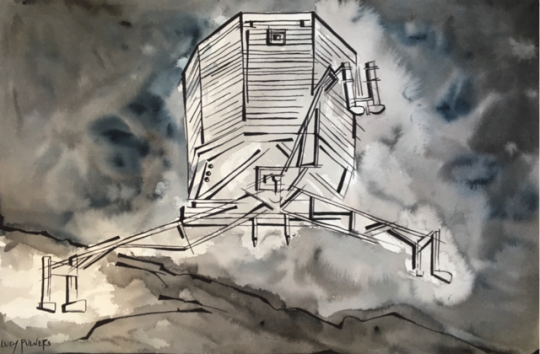
Lucy Pulvers: Philae
An Image in Ink and Watercolour on Paper imagining Philae approaching the comet’s surface
Lucy Pulvers was born in Japan and grew up in both Tokyo and Kyoto. She was educated in Japanese schools until she moved to Sydney, Australia, in 2001, and is bilingual and bicultural in Japanese and English. After graduating from high school, she studied Pharmacy and, later, Radiography at the University of Sydney before leaving university to study art full time.
In 2014, Lucy was awarded the Thea Proctor Scholarship by the prestigious Julian Ashton Art School. She has been a finalist in the Hunters Hill Art Prize in 2015, 2016 and 2017. A highlight for her was being selected as a finalist, along with her two artist sisters, in the Square Kilometre Array ‘Seeing Stars’ Art Prize in 2013. Lucy paints in watercolour, ink and gouache as well as in oils and regularly exhibits her work and accepts commissions. She is a finalist in the 2017 Portia Geach Portraiture Prize.
Lucy’s sisters Sophie and Alice are also artists with a scientific background.
More about their work: www.pulvers.co
#art#fine art#watercolor#ink#gouache#philae#rosetta#comet#comet landing#japan#australia#space#rosettaarttribute
2 notes
·
View notes
Photo

Sophie Pulvers: Philae and Rosetta paintings
Above: ‘Philae and an Australian Phasmid’ – acrylic on canvas A commissioned work
Sophie wrote: “Over the past 8 years as a classroom teacher for lower primary school, I have presented the NASA image of the day everyday on the classroom Smart Board and begun the day with a short chat about the image. [...] I have also closely followed with my students the journey of landing of Curiosity, the Pluto flyby, the Juno launch and, of course, the Rosetta Mission.
With my class, we learned about the whole journey and watched and waited and celebrated Philae landing, even though it bounced and landed badly! As a teacher, I hope above all other things, to inspire my students to be curious about the amazing universe into which they have been fortunate enough to be born.”
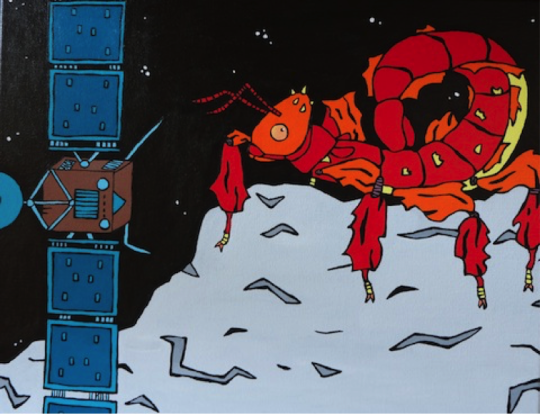
Above: ‘Rosetta and an Australian Phasmid’ – acrylic on canvas A commissioned work
Sophie Pulvers was born in Japan and grew up in both Tokyo and Kyoto. She was educated in Japanese schools until she moved to Sydney, Australia, in 2001, and is bilingual and bicultural in Japanese and English. After finishing high school, Sophie completed an undergraduate degree in Environmental Science at the University of New South Wales, then went on to complete a Master of Primary Education. On leaving university, she became a primary school teacher and always emphasises science and mathematics in her teaching.
Sophie paints consistently and her painting strongly reflects her background and interest in science. She has been a semi-finalist in the prestigious, national Doug Moran Portraiture Prize in 2015, and also a finalist in the Hunters Hill Art Prize in 2015, 2016 and 2017, and in the Mosman Art Prize 2016. A highlight of her career was to be selected as a finalist in the Square Kilometre Array ‘Seeing Stars’ Art Prize in 2013. Sophie is principally a painter of animal subjects, although, she also paints human portraits and regularly accepts commissions.
Sophie’s sisters Lucy and Alice are also artists with a scientific background.
More about their work: www.pulvers.co
#painting#art#fine art#rosetta#philae#comet#space#animal#life#life in space#phasmid#exploration#japan#australia#rosettaarttribute#commission#canvas#acrylic#education#science
0 notes
Photo

Jean-François Provost: Présages
Solo exhibition
Premiere: 23 October – 21 December 2014 Art-image gallery @ Maison de la culture de Gatineau, Quebec, Canada
22 January – 23 February 2016 Maison de la culture Ahuntsic-Cartierville, Montreal, Quebec, Canada
The paintings are inspired by images of small solar system bodies obtained by space probes, including Rosetta’s images of Comet 67P/Churyumov-Gerasimenko and the (21) Lutetia asteroid.
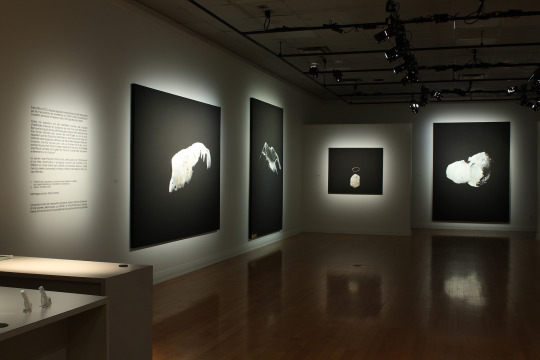

Visual artist Jean-François Provost takes a break from his usual practice and looks at a natural phenomenon that is of particular concern to him: the real possibility that a geo-cruising asteroid collides with the Earth.
The artist was captivated by the images of asteroids floating in a totally black space, in an absolute void. He is seduced by the beauty of these celestial bodies, but also by the calm and disturbing silence that emanates from them. According to him, asteroids, both beautiful and fascinating, give us food for thought about our history, our collective and individual future and order a break in our frantic lives.
Text from the exhibition page (translated from French): http://w8.gatineau.ca/artimage/expositions/passees/jean-francois-provost.html

(25143) Itokawa, oil and acrylic on canvas, 2014, 96’ X 72’
Jean-François wrote: “My current work, which is diametrically opposed to my usual, abstraction-oriented work, addresses the threat of asteroids to humanity and questions the connection that the announcement of an asteroid impact that could cause a global catastrophe could have on our life. Far from being fatalistic, this theme is a sort of vibrant advocacy for life and mindfulness.”

(243) Ida, oil and acrylic on canvas, 2014, 72’ X 96’
“Over the past 600 million years, the Earth has experienced five mass extinctions that caused half of the world's plant and animal species to disappear almost simultaneously. These extinctions are due to asteroid impacts. Impacts that have allowed human life to develop. Asteroids have fascinated us since the dawn of time. Many civilizations considered them to be divinities or messages from God, sometimes as omens. Many artists have represented stars or shooting stars in their works, including Albrecht Dürer. Asteroids and comets brought life to Earth.” – JFP

(253)Mathilde, oil and acrylic on canvas, 2014, 96’ X 72’
“These magnificent and fascinating celestial bodies give us food for thought about our collective and individual future and call for a stop in our frantic lives. Are we ready for the announcement of an asteroid impact? The answer is no, of course. But if we were told that this was the case, what would be our reaction? Sooner or later, scientists predict that an asteroid will strike the Earth.
According to Edward Lu, a former NASA astronaut and founding member of the B612 Foundation, most large asteroids with the potential to destroy an entire country or continent have been detected. However, this hardly represents 10,000 of the one million potentially dangerous asteroids capable of destroying a large metropolitan area.” – JFP
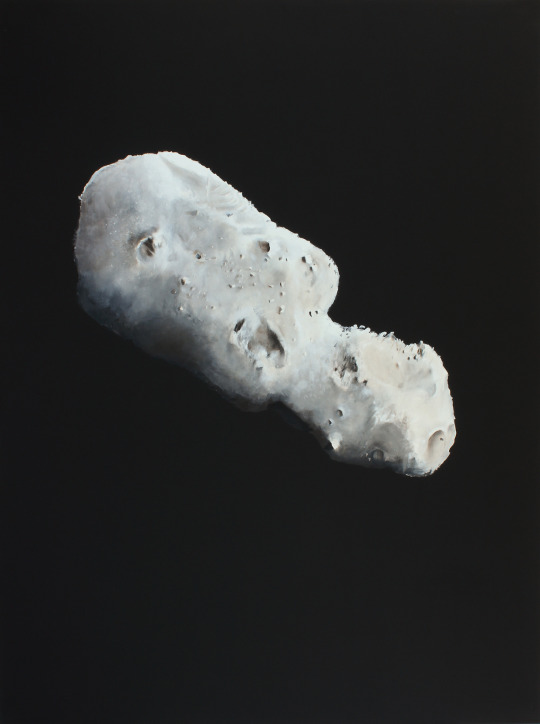
(4179)Toutatis, oil and acrylic on canvas, 2014, 96’ X 72’
“Are we fully aware of our fast-paced life, of the seasons that follow one other at a crazy pace? According to Buddhism, it would be in our interest to become aware of the concept of impermanence to live the sense of urgency that should animate us.” – JFP

Phobos, oil and acrylic on canvas, 2014, 96’ X 72’
“How do we envision our future? Are we happy? And our current life? Have we become what we wanted? etc. These reflections transcend the subject himself and control, oblige in a way, a time to stop, thus pushing reflection and reasoning to the depths of our being. The human race must sometimes be confronted with its own fears or with itself so that profound changes may occur.
Far from being fatalistic, such a reflection brings us back to true values, the essence of life, its fragility and the urgency of living.” – JFP

Tchourioumov-Guérassimenko, oil and acrylic on canvas, 2014, 96’ X 72’
“The idea of an exhibition about asteroids came to me one day when I came across a photo of the asteroid Lutetia. This photo marked me deeply, and I later did more research to discover equally impressive images of other asteroids. I was fascinated by the beauty of these celestial bodies, but also by the calm and silence that emanates from them. A worrying silence, I would say.
So I began to draw these objects in compressed charcoal, using a technique in which you subtract charcoal with an eraser to reveal light areas and volumes. The works that will be presented for this exhibition will be large format canvases of real asteroids known to astrophysicists and to science. Some are NEOs (Near-Earth Objects), that is to say that they cross, at one time or another in their revolution, the orbit of the Earth or, at least, can pass very close and carry risks.” – JFP
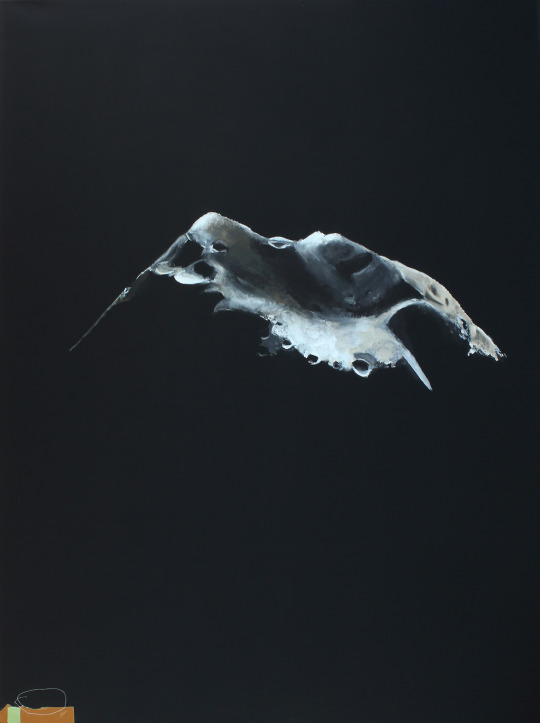
(21) Lutetia, oil and acrylic on canvas, 2014, 96’ X 72’
“Since 2007, my work is moving towards a purification of pictorial space. This thread has become, over time, a second nature, a state that underlies my work. The artwork must breathe. Do more with less. Thinking of it, it is not by chance that I was subjugated by these images of asteroids floating in a totally black space, in a vacuum. That's where the purification is. In the minimalist images of asteroids. The reproduction of asteroids with charcoal and then on canvas comes to some extent close my inner debate on purification. It is a form of personal conclusion.” – JFP

Étude pour (21) Lutetia, oil and acrylic on canvas, 2014, 40 X 48 cm
“The soundtrack made by Alain Larose, which accompanies the exhibition, plunges us into a 24-hour day. It evokes in 24 minutes, one minute for every hour of the day, the tumult of everyday life in the four corners of the planet.” – JFP
Born in Ottawa in 1976, Jean-François Provost holds a Bachelor's degree in Visual Arts from the Université du Québec en Outaouais. He has received several awards and honors for his work as a painter and has produced nearly twenty individual exhibitions in the last ten years. His work in painting and drawing has been presented in Canada, Austria and Italy. The works of Provost are found in several corporate and private collections in Canada, the United States, Europe and the Middle East.
Drawing, is for him a gestural manifestation of the subconscious, plays a decisive role in the composition of his canvases. Provost says that since 2007 he has been exploring pictorial space in his work, in a process of constant refinement. “My approach to both drawing and painting goes far beyond straightforward execution. The drawings, in India ink, graphite, and red chalk, are produced in a stream of consciousness and are then cut out. Paradoxically, they become the embryo of a work that is constructed using a highly studied and rational approach that follows the logic of my investigation of space and its simplification. My work is mainly based on the study of composition in terms of line, depth, relationships between masses, gestures, and trompe-l’oeil”. Provost basically defines himself as a Plasticien.
Biography by Jo-Anne Bouchard, Ph.D -- Art Historian
More about Jean-François Provost at: www.jeanfrancoisprovost.com
#fine art#painting#oil#acrylic#canvas#asteroid#comet#near-earth object#impact#rosetta#comet 67p#lutetia#trompeloeil#minimalistic#morewithless#quebec#canada#large format#rosettaarttribute
4 notes
·
View notes
Photo
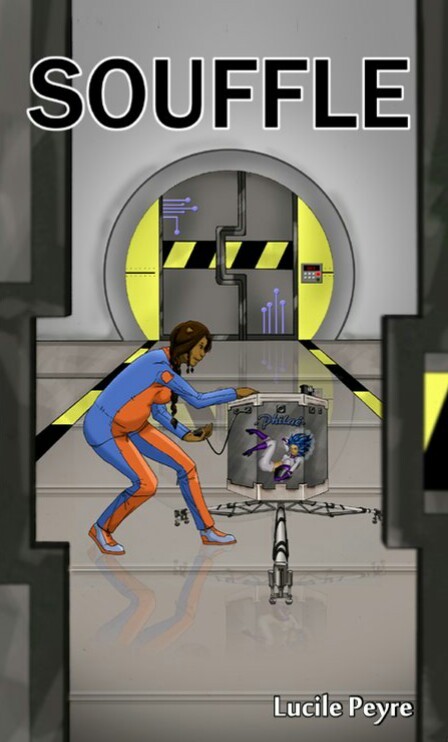
Lucile Peyre: Souffle
The fourth novel in a science-fiction saga, featuring the Rosetta mission lander, Philae, as one of the main characters. The saga is entitled “Le Ciel étoilé au-dessus de moi” (The starry sky above me).
Artwork on the cover by Philippe Nonnet.
Synopsis: For centuries, some islanders have had the same dream, the dream of a little girl dancing under a sky with no stars. Then, Isle En Ciel was ravaged by humans and its inhabitants exterminated. Survivors were able to find refuge on Nehax. Centuries later, on the small orange planet, it was Maysan’s turn to dream. And it’s a little girl dancing, under a sky with no stars, that fills her nights. (Translated from French)
ISBN : 978-2-9552519-3-5
Lucile Peyre is a philosophy teacher and science fiction author from France. She was inspired by the Rosetta mission and included Philae as a character in her series of sci-fi novels. You can download a digital version of Lucile’s novels (in French) from her webpage: http://lucilepeyre.wixsite.com/fantastique/romans
#novel#book#scifi#series#philae#rosetta#comet#rosettaarttribute#french#france#starry#sky#planet#science fiction#saga
2 notes
·
View notes